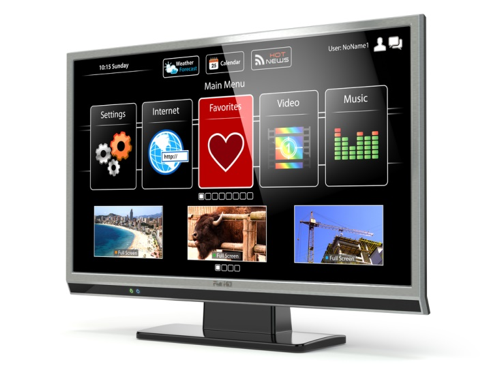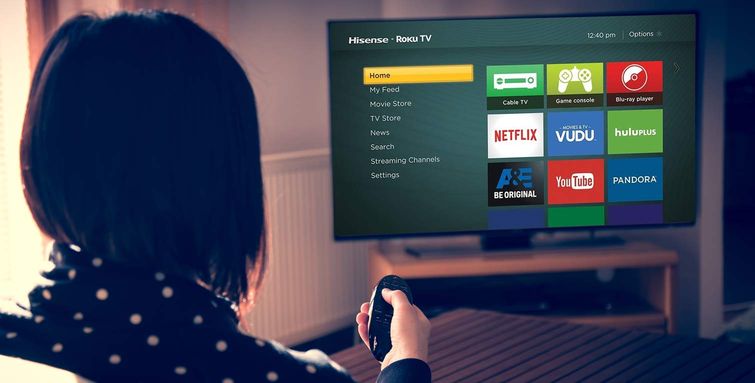For some people, the idea of a smart TV seems almost contradictory — after all, it hasn’t been called the “boob tube” for years for nothing. Still, despite questions about the actual programming on television, television sets themselves have come a long way since the days of rabbit ear antennas and three channels in black and white. It seems that we have officially entered the age of the smart TV.
 Most of us think of smart TVs as connected TVs, or some sort of hybrid of a television and a computer — in short, the TV is connected to the internet and offers at least some form of Web 2.0 functionality. However, for most people, that’s where the “smart” part of a smart TV stops. The truth is, what’s a great idea in theory, a TV set that allows you to connect to the internet and access your streaming media services (such as Netflix and the like) as well as other online content, is often cumbersome to use. The idea is there, but the embedded design technology to make it truly useful hasn’t quite made it yet.
Most of us think of smart TVs as connected TVs, or some sort of hybrid of a television and a computer — in short, the TV is connected to the internet and offers at least some form of Web 2.0 functionality. However, for most people, that’s where the “smart” part of a smart TV stops. The truth is, what’s a great idea in theory, a TV set that allows you to connect to the internet and access your streaming media services (such as Netflix and the like) as well as other online content, is often cumbersome to use. The idea is there, but the embedded design technology to make it truly useful hasn’t quite made it yet.
That’s all about to change, though. Thanks to more widely available and even more inexpensive TV design technology, such as PIC microcontrollers kits using FPUs, smart TVs are becoming truly smart. Rather than relying on apps and difficult-to-use controls and interfaces, smart TVs will soon be able to do more than simply allow you to watch both broadcast and internet-streamed media. Within the next few years, you can reasonably expect some of the following developments in smart TV technology.
Simpler Controls
 One of the most common complaints about the current crop of smart TVs is that they are difficult to control. Accessing content typically involves using a remote control to point at the screen, and typing using the remote keys, which is challenging at best and tedious at worst. This difficulty in access is why products like Roku or AppleTV, which are designed with voice commands and easier-to-use interfaces, are much more popular than smart TVS.
One of the most common complaints about the current crop of smart TVs is that they are difficult to control. Accessing content typically involves using a remote control to point at the screen, and typing using the remote keys, which is challenging at best and tedious at worst. This difficulty in access is why products like Roku or AppleTV, which are designed with voice commands and easier-to-use interfaces, are much more popular than smart TVS.
However, going forward, expect to see changes in how televisions are controlled, with everything from voice commands to tablet-style controllers that offer touch screen selections and a full keyboard. Another likely occurrence is smart TVs will be designed with the ability to work alongside special apps you’ve downloaded onto your smartphone to increase usability.
More Efficient Interfaces
At this point, most smart TVs require users to download apps for their content; hence why most smart TV now come with pre-downloaded apps like Netflix, YouTube, Hulu, and more. However, not only can this be inconvenient (not to mention the apps don’t always work as they should with the TV) but they don’t create the best user experience. Going forward, expect smart TVs to actually be smart, particularly in terms of offering content that you are likely to be interested in.
Smart TVs will soon be able to gather data about your viewing preferences based on what you watch and when, and make recommendations of content that it thinks you will be interested in. Developers tout this technology as a way to avoid having to scroll through all 500 channels only to wind up watching your favorite movie again.
While your television’s data collection can help you access more interesting and entertaining programming, there is another side to the coin. There is the potential for your data to be gathered and sold to advertisers, allowing your content providers to offer advertising that is presumably more relevant to you. In short, your viewing habits are likely to contribute to more targeted advertising.
Security Will Increase
One of the chief concerns about all IoT devices is their security, and more specifically, the security of the information that is shared over the devices. Current smart TVs do have some vulnerabilities that could make them a target for hackers, allowing them to collect data, install and open apps, or even turn on a webcam.
While the risk is admittedly small, television developers are placing a priority on security and adding in protections against malware and strengthening the infrastructure to keep hackers out and keep users safe. Look for the next generation of smart TVs to have additional security measures built in, as well as tools to give the user more control.
These are just a few ways that smart TVs will develop within the very near future. Don’t be surprised if, within the next half decade, televisions move well beyond a simple entertainment device and become a key part of the fully connected home.


